Courtesy of David Herington
'Stage Right' sees photographer David Herington showcasing the on and offstage aspects of time spent touring with DZ Deathrays, Dune Rats, and Skegss.
There’s a very good chance that if you’re a fan of Australian music, the work of David Herington is something you’re already familiar with.
With almost a decade of experience within the music industry, Herington is across just about every facet of touring life, though it’s photography that he’s become most renowned for in the public eye. In addition to serving as vital piece of the touring landscape, Herington has used his talents to document the music industry by way of shots of bands such as Skegss, Dune Rats, and DZ Deathrays, capturing the high-octane energy of their live shows.
Unfortunately, this year has been one of the hardest in living memory for the music industry, with a global pandemic leading to shutdowns the world over. Of course, with venues forced to close, bands are unable to tour, and photographers such as Herington are left unable to document the music world that would’ve been otherwise.
With lockdowns taking place over much of this last year, Herington found himself with plenty of time on his hand, and used this unplanned downtime to collate his tour photography from over the last few years into his first book.
Dubbed Stage Right, this limited edition collection is named for the location in which Herington can usually be found on tour, and features a side of touring that is rarely seen through the lens of concert photographers.
In addition to live shots, Stage Right serves as a behind-the-scenes look into the music world, featuring images of what is is that takes up large portions of band’s time on the road, including the undocumented periods of time spent driving, waiting, and all of the ups and downs in-between.
With Stage Right officially released today, Herington spoke to Rolling Stone about his career in the music industry, his time as a photographer, and just what a project such as Stage Right hopes to convey via its stunning shots.
Love Music?
Get your daily dose of everything happening in Australian/New Zealand music and globally.
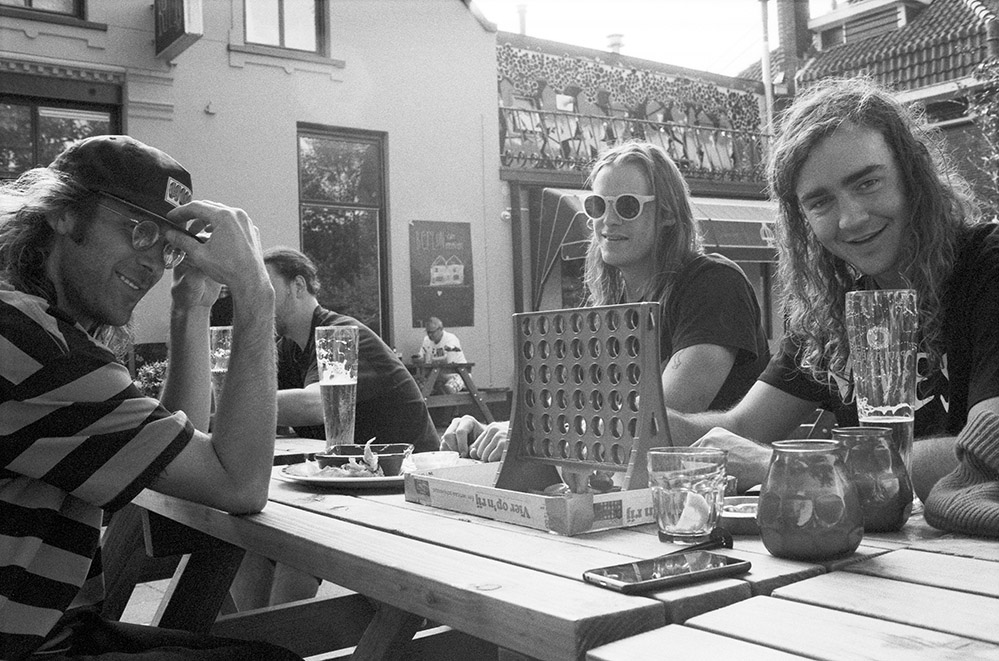
Members of Dune Rats captured at Hilvarenbeek in the Netherlands. (Photo courtesy of David Herington)
Let’s kick things off with a question about yourself: How did you first get into gig photography, and how has it managed to impact your life?
I first started working in the music industry as a touring guitar tech in 2011. By 2013, I was tour managing here in Australia and by 2016, I was working as a guitar tech and tour manager internationally.
For the majority of that time I have been working predominantly with three bands; Dune Rats since 2013, DZ Deathrays since 2015, and Skegss since 2017. I have known Skegss and DZ Deathrays since around 2014, we just had not worked together yet.
I never really started photographing gigs and I only ever photograph gigs that I am working at as either a guitar tech or tour manager, and I have only ever really taken the photographs for myself.
I have always loved photography. My parents always supported my passion and with the help of my high school photography teacher I found an outlet that took me away from in-school suspensions and into the darkroom. I have been photographing everything in my life since then.
After working on stages around the country I came to meet some phenomenal photographers. I got to watch the way they work and was always happy to accommodate them on the stage, and as such I could see what they did, how they moved, and what caught their eye.
I watched photographers I admire and look up to immensely, people like Kane Hibberd, Jess Gleeson, Ian Laidlaw, Luke Henery, Charlie Hardy, and Maclay Heriot, and figured I would never be able to capture live performance as impressively as they did, but I had a different angle and different access that they did not have.
Touring with these musicians, sharing rooms, sharing vans, essentially sharing lives with them for large portions of these years developed an intimate relationship that is difficult to understand or describe to someone who has not been in a similar situation. There is something unspeakable that bonds people in a van at 3am, driving to a 1-star hotel after doing nine shows in a row.
The impact on my life is immeasurable. These people are like family to me. I could not recall a day in the last four years that I have not spoken to Lachlan from DZ Deathrays.
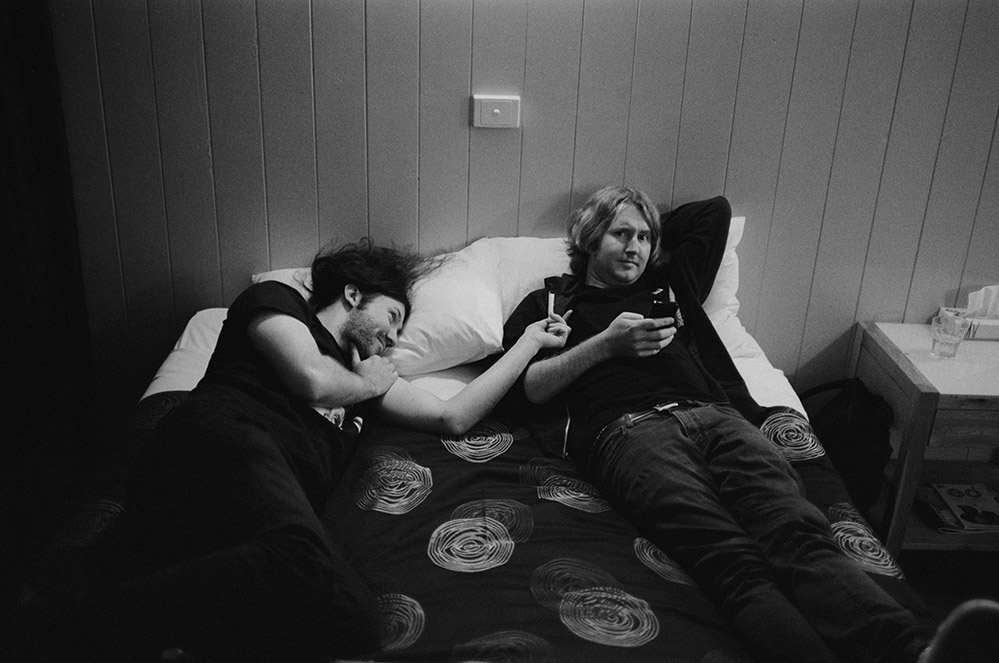
DZ Deathrays’ utilising a hotel bed in Torquay. (Photo courtesy of David Herington)
What was it that inspired you to put together a project like Stage Right?
I think what I spoke to earlier. I saw these other photographers taking incredible images from the pit, amazing portraits in the studio, and capturing the glamour of the night. I know these pictures are not the entire truth.
I think of touring like a wave. There are 23 hours of doing basically nothing, waiting for one hour of the highest energy you can muster and then you crash down again. I wanted to document that.
I wanted to show the hotel rooms, the sleeping in the van, the sitting on a staircase waiting or the playing soccer in a hotel car park, and juxtapose that with the vast festival crowds and screaming audiences. I think that tells a more complete story.
Had you ever done a project such as this before?
This is the first publication I have ever done like this; I have never even put photographs together like this before.
I first had the idea of Stage Right in 2016, and always knew I wanted to call it that. “Stage right” is my position on stage as a guitar tech and I wanted it to end up as something from my perspective on tour. Since then I have been taking photographs, developing film, and archiving.
Before COVID-19 I was touring around three quarters of the year, usually doing somewhere around 120 concerts annually. I have never really had the time to do anything with it, but I have always known I wanted to.
Since physical distancing measures have put a pause on live music, I have taken that time to learn how to use Adobe InDesign (with the help of Todd [Andrews] from These New South Whales), collate all of my favourite photographic memories and journal entries to then put them together in this one package.
Are zines like this something you’ve been a fan of for a long time? Do you have any particular favourites, if so?
I think I have always been a bit more of a fan of long-form documentary photography. Since I was a teenager I have been fascinated with photographers like Sebastiao Salgado, Elliot Erwitt, and Josef Koudelka.
I like to collect photobooks and I am completely captivated by them, but generally not of music photography. I think I draw my inspiration from elsewhere.
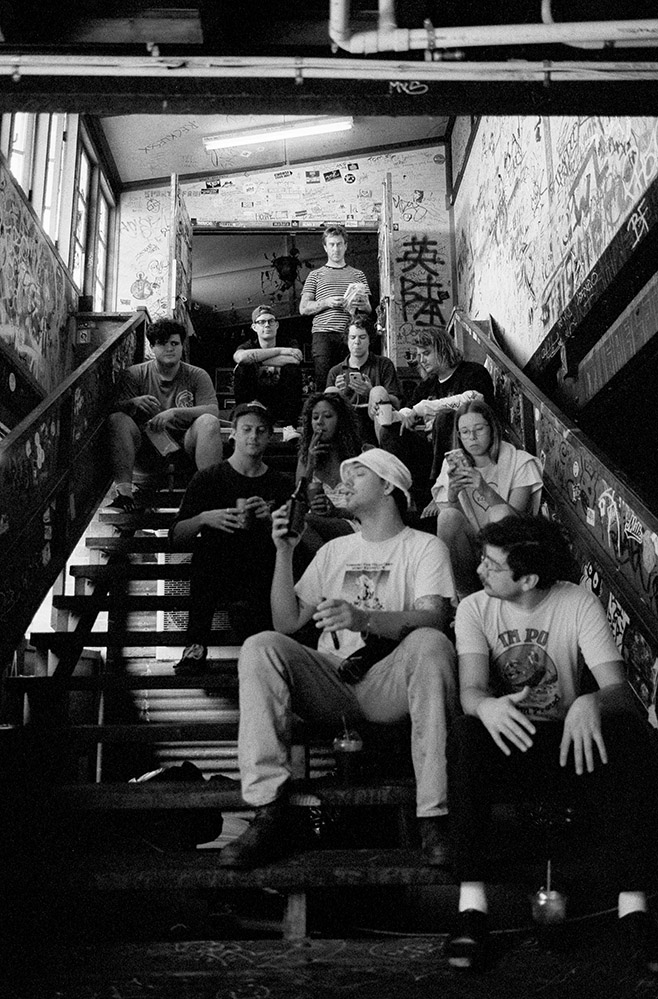
Members of Skegss and Twin Peaks captured during a stop in Brisbane. (Photo courtesy of David Herington)
Did a project like this give you a chance to reminisce on some of the moments you’d forgotten or was all of this content that you still had at the forefront of your mind?
I have had so much fun looking over all of these photographs. So many of them are still so vivid in my memory. Some of them I recall pressing the shutter and remember the moment completely, others I do not recall as well.
I have always had immense trouble sleeping on tour and started to keep a journal to get all of my thoughts out of my head before I went to sleep. It worked occasionally. I find it very funny to read back through these journals and see how I was feeling at the time. Those journals are what make up the entries scattered through the pages.
When people think of photography and music, they instantly assume it’s nothing but sweaty shots from the mosh-pit. Stage Right though doesn’t solely go in that direction, it also has pictures of the time off the stage as well, and it shows a more human side of the music world. What was the thought process behind that?
I think coming from my position as someone who was just on the tour, actually there for a different purpose to taking photographs, has given me incredibly unique and intimate access often not afforded to live music photographers. Oftentimes when the sweaty mosh-pits are happening I am tuning a guitar, picking up a microphone stand, straightening a cymbal or some-such thing and the moments I miss photographically are captured by someone else or just left alone as a memory and I am absolutely fine with that.
With Stage Right, I saw an opportunity to capture the lives of my friends, for example, not as “Shane from DZ Deathrays” but just as Shane, my friend. I felt like these moments were so much more important to me personally and showcase both music and touring in a way that is not often publicly portrayed.
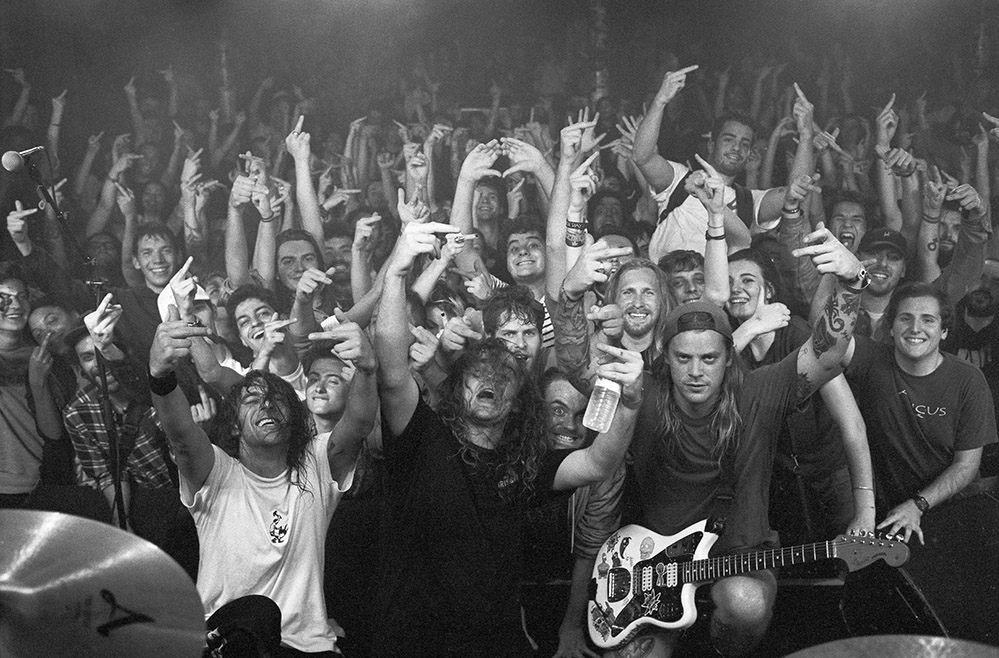
Dune Rats celebrate the rowdy end of a show in Paris. (Photo courtesy of David Herington)
Personally, I feel it’s important for photographers to tell a story with their work, and Stage Right does exactly that, whether it be by photos on and off stage or the recollections of time on the road. What do you hope people will take away from a project such as this?
I appreciate you seeing the story in the work. Thank you for that.
I want to show the ups and downs of being on tour and hopefully create something relatable not only for musicians or touring crew to see but for anyone.
I hope that people get to see music and musicians from a different perspective and see musicians they look up to in a more intimate setting.
I want to show what touring can be like from the inside and from the perspective of someone who has done it for a large portion of their life.
If people can see that in the work, that would make me happy.
Do you think a project like this might be something you’ll look at doing more of in the future?
I would really like to keep building on this body of work for as long as I can.
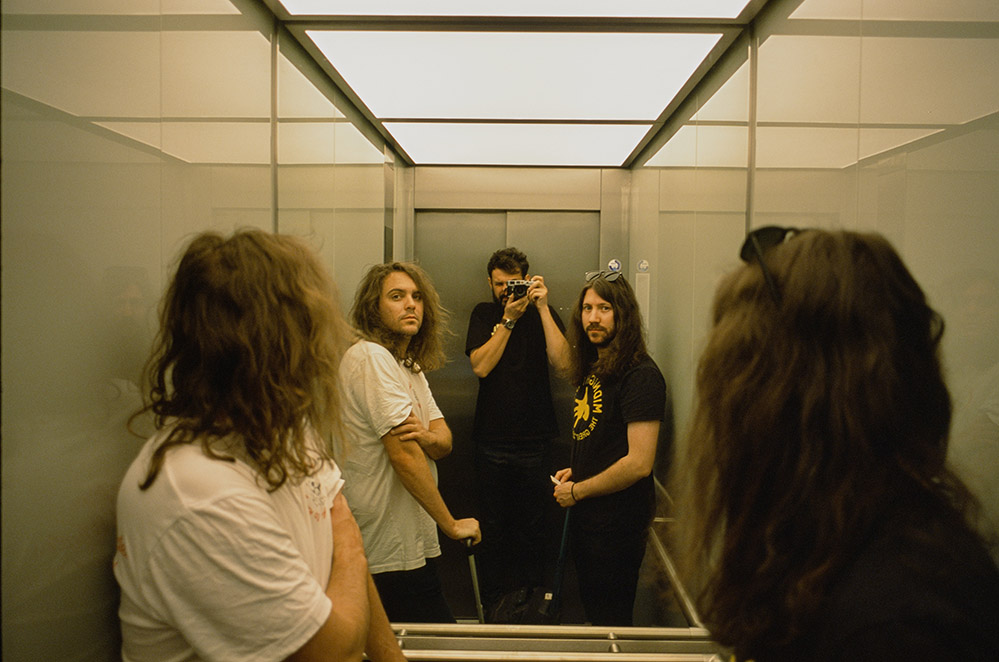
DZ Deathrays being documented using an elevator in Hamburg. (Photo courtesy of David Herington)
It feels as though photographers have been overlooked in the impact of 2020. Everyone talks about the bands, the venues, the technicians, bar staff, etc., but very little attention is given to photographers. Do you hope something like this might be able to help the importance of the photographer in the live industry to be recognised and appreciated?
I definitely agree that they have been overlooked. I think perhaps because photography can be so broad people do not expect that physical distancing might impact photographers. For example, if you do architectural photography, you are possibly doing ok right now, I don’t know. Anyone who photographs events, be that live music, weddings, theatre, or the likes would certainly be struggling right now.
I think a great deal of people very wrongfully see those who work in the creative arts as people who just have a “hobby” and that it is not a “real job” regardless of the fact they dedicate their entire life to it. I think the way live music in particular is only ever really portrayed as an entirely positive experience perhaps contributes to this. Perhaps this can shine a slightly different light.
I certainly feel for photographers and can empathise with anyone at all from any industry struggling at the moment.
If something like Stage Right can help anyone in any way at all, I would not only be very happy but also very proud.
David Herington’s Stage Right is officially out today, and is available to order via his website.



































